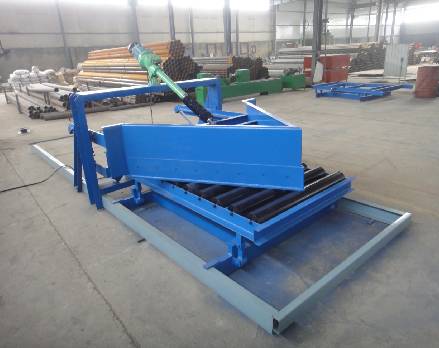 Afrikaans
Afrikaans  Albanian
Albanian  Amharic
Amharic  Arabic
Arabic  Armenian
Armenian  Azerbaijani
Azerbaijani  Basque
Basque  Belarusian
Belarusian  Bengali
Bengali  Bosnian
Bosnian  Bulgarian
Bulgarian  Catalan
Catalan  Cebuano
Cebuano  Corsican
Corsican  Croatian
Croatian  Czech
Czech  Danish
Danish  Dutch
Dutch  English
English  Esperanto
Esperanto  Estonian
Estonian  Finnish
Finnish  French
French  Frisian
Frisian  Galician
Galician  Georgian
Georgian  German
German  Greek
Greek  Gujarati
Gujarati  Haitian Creole
Haitian Creole  hausa
hausa  hawaiian
hawaiian  Hebrew
Hebrew  Hindi
Hindi  Miao
Miao  Hungarian
Hungarian  Icelandic
Icelandic  igbo
igbo  Indonesian
Indonesian  irish
irish  Italian
Italian  Japanese
Japanese  Javanese
Javanese  Kannada
Kannada  kazakh
kazakh  Khmer
Khmer  Rwandese
Rwandese  Korean
Korean  Kurdish
Kurdish  Kyrgyz
Kyrgyz  Lao
Lao  Latin
Latin  Latvian
Latvian  Lithuanian
Lithuanian  Luxembourgish
Luxembourgish  Macedonian
Macedonian  Malgashi
Malgashi  Malay
Malay  Malayalam
Malayalam  Maltese
Maltese  Maori
Maori  Marathi
Marathi  Mongolian
Mongolian  Myanmar
Myanmar  Nepali
Nepali  Norwegian
Norwegian  Norwegian
Norwegian  Occitan
Occitan  Pashto
Pashto  Persian
Persian  Polish
Polish  Portuguese
Portuguese  Punjabi
Punjabi  Romanian
Romanian  Russian
Russian  Samoan
Samoan  Scottish Gaelic
Scottish Gaelic  Serbian
Serbian  Sesotho
Sesotho  Shona
Shona  Sindhi
Sindhi  Sinhala
Sinhala  Slovak
Slovak  Slovenian
Slovenian  Somali
Somali  Spanish
Spanish  Sundanese
Sundanese  Swahili
Swahili  Swedish
Swedish  Tagalog
Tagalog  Tajik
Tajik  Tamil
Tamil  Tatar
Tatar  Telugu
Telugu  Thai
Thai  Turkish
Turkish  Turkmen
Turkmen  Ukrainian
Ukrainian  Urdu
Urdu  Uighur
Uighur  Uzbek
Uzbek  Vietnamese
Vietnamese  Welsh
Welsh  Bantu
Bantu  Yiddish
Yiddish  Yoruba
Yoruba  Zulu
Zulu Understanding the Functions and Importance of Head and Tail Pulleys in Conveyor Systems
Understanding the Head and Tail Pulleys in Conveyor Systems
In industrial settings, conveyor systems play a crucial role in the efficient movement of materials and products. Among the key components of a conveyor system are the head and tail pulleys, which ensure proper operation and efficiency. Understanding their function and significance can enhance the performance of any conveyor system.
The Role of Head Pulley
The head pulley, located at the discharge end of the conveyor, is pivotal in the movement and management of materials. Its primary function is to drive the conveyor belt forward, utilizing a motor that turns the pulley. As the head pulley rotates, it pulls the belt along with it, facilitating the movement of materials from one point to another.
One of the essential characteristics of the head pulley is its ability to provide tension to the conveyor belt. This tension is crucial for maintaining the belt's operation without slipping, which can lead to wear and tear, inefficiency, and even downtime in production. Depending on the design, the head pulley may also incorporate features like rubber lagging, which increases friction and enhances the grip of the belt, particularly in applications involving steep inclines or heavy loads.
Additionally, the head pulley plays a role in the discharge of materials. As the belt approaches the head pulley, the materials are lifted and directed off the belt into storage or processing areas. The angle and design of the head pulley can affect the efficiency of this process, as well as the trajectory of the materials being discharged.
The Role of Tail Pulley
head pulley tail pulley

In contrast, the tail pulley is situated at the loading end of the conveyor system. Its primary function is to support the belt's return journey after it has completed its cycle of transporting materials. While the tail pulley does not drive the belt, it plays a crucial role in maintaining proper alignment and tension.
The tail pulley serves as a guide for the belt as it returns to the head pulley. Proper alignment is essential to avoid misalignment issues that could lead to premature wear and tear, uneven material distribution, or even accidents. Some tail pulleys are adjustable, allowing operators to fine-tune the tension and alignment of the belt for optimal performance.
Furthermore, tail pulleys can also be designed to accommodate specific loading requirements. For example, in certain applications, tail pulleys can be equipped with scrapers or cleaners that help remove material residues, ensuring that the return section of the belt remains clean and efficient.
Conclusion
Head and tail pulleys are critical components of conveyor systems, each fulfilling distinct yet equally important roles. The head pulley drives the belt and facilitates material discharge, while the tail pulley supports the belt's return journey and maintains alignment. Understanding the functionalities and importance of these pulleys can lead to improved operational efficiency, reduced maintenance costs, and enhanced safety in an industrial environment.
Effective management and timely maintenance of head and tail pulleys are essential for ensuring the longevity of the conveyor system. By recognizing their significance within the overall infrastructure, businesses can optimize their logistics and operational workflow, ultimately contributing to better productivity and efficiency in an increasingly competitive landscape.
-
Revolutionizing Conveyor Reliability with Advanced Rubber Lagging PulleysNewsJul.22,2025
-
Powering Precision and Durability with Expert Manufacturers of Conveyor ComponentsNewsJul.22,2025
-
Optimizing Conveyor Systems with Advanced Conveyor AccessoriesNewsJul.22,2025
-
Maximize Conveyor Efficiency with Quality Conveyor Idler PulleysNewsJul.22,2025
-
Future-Proof Your Conveyor System with High-Performance Polyurethane RollerNewsJul.22,2025
-
Driving Efficiency Forward with Quality Idlers and RollersNewsJul.22,2025





























